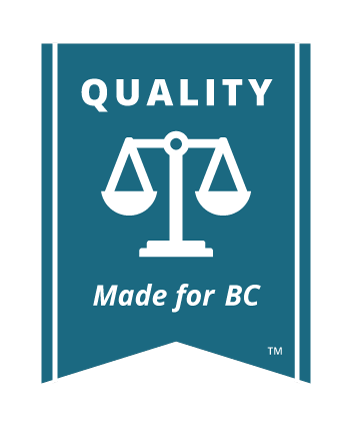Preparing an Affidavit
An affidavit has seven parts. Most parts of the affidavit are technical. We will look at each of them in turn.
- Style of proceeding
- Deponent’s statement (“deponent’ is the person making the affidavit, and is also called the “affiant”)
- Knowledge statement
- Body of the affidavit (this is the most important part of the affidavit)
- Ending of the affidavit
- Exhibits
- Backing sheet
1. Style of Proceeding
A style of proceeding (also referred to as a style of cause) appears on the first page of all court documents. It states who is suing whom and also gives the file number and court registry name.The style of proceeding remains unchanged throughout the life of the court case unless the judge orders otherwise.The style of proceeding enables the court registry staff to put the document in the right court file.
For example, a style of proceeding might look like:
Start your affidavit with the style of proceeding. You can copy this off of other documents filed in the lawsuit if any exist. For affidavits you must add the following to the style of proceeding.
In the top right hand corner, above the court file, you must write:
- The number of the affidavit (you may have made more than one)
- The name of the person making the statement (your name if it is your affidavit)
- The date on which the affidavit was made
Example: This is the 3rd affidavit of Mary Smith and was made on February 11, 2020.
2. Deponent’s Statement

Key Terms
A deponent is the person who is making the affidavit.
The deponent has to identify themselves as the person who is making the statements in the affidavit. This deponent’s statement has to be put at the beginning of each affidavit. It identifies who you are and what your occupation is.
For example:
- If you are retired, you would put in “retired” or “old age pensioner”
- If you are unemployed, you can simply write “unemployed”
As noted above, the deponent must choose whether you are going to swear or affirm the affidavit. If the deponent will swear, include that the deponent will “MAKE OATH AND SAY”. If the deponent will affirm, include that the deponent will “SOLEMNLY AFFIRM THAT”.
For example (Sworn Affidavit):
- I, MARY SMITH, of 132 Main Street, in the City of Vancouver, Province of British Columbia, electrician, MAKE OATH AND SAY THAT:
For example ((Solemnly Affirmed Affidavit):
- I, MARY SMITH, of 132 Main Street, in the City of Vancouver, Province of British Columbia, electrician, SOLEMNLY AFFIRM THAT:
3. Knowledge Statement
A knowledge statement will be the first paragraph of your affidavit. The knowledge statement explains to the Court who you are and how you know what is set out in the rest of the affidavit.
It looks like:
- I am the [for example plaintiff, defendant, wife of the plaintiff, etc.] in the matter and as such have personal knowledge of the matters herein referred to:
Or
- I am the [for example plaintiff, defendant, wife of the plaintiff, etc.] in the matter and as such have personal knowledge of the matters herein referred to, except where indicated to be on information and belief, and where so stated I verily believe them to be true
Which of the two knowledge statements you should use depends on what is in your affidavit.
If your affidavit contains just things you (or the deponent) know to be true from experience, use the first knowledge statement. That is, use the statement “…have personal knowledge of the matters herein referred to”.
If your affidavit contains things that you (or the deponent) were told to be true by someone else, use the second knowledge statement. That is, use the statement “… have personal knowledge of the matters herein referred to, except where indicated to be on information and belief, and where so stated I verily believe them to be true.”
If you can avoid using information you heard from someone else, you should do that. This kind of evidence is called “hearsay”. Hearsay evidence is less reliable, for the simple reason that the Court cannot be certain that the person you heard from was telling the truth. Sometimes you are not allowed to use hearsay. For example, if the order you are seeking is “final”, like a summary judgment order, you cannot use hearsay.
This is a tricky part of affidavits, and obtaining legal advice on whether or not you can use hearsay may be valuable. See Get Help.
4. Body of the Affidavit
This is the most important part. Here is where the actual evidence is set out for the Court. Most simply, your job is to tell the story. Stick to things of which you personally know to be true as much as possible. If it is necessary to include something someone else told you, make clear who told you the information, and say whether you believe it to be true.
You can write for example:
I was advised by my husband, Steve Smith, that the letter was delivered on February 11, 2020, and I believe that to be true.
Write affidavits thinking of making them as helpful as possible for the judge who is going to read them. The judge may not know much about your case. However, they are very intelligent and capable people. They want you to get to the point and stick to the facts. Above all, they want to know they can trust you. Do not lie. Do not exaggerate. It will only hurt your case.
5. Ending of the Affidavit
You must swear your affidavit in front of a lawyer or a commissioner for taking affidavits. A court official such as a registry clerk is a commissioner for taking affidavits. (Registry staff will perform this service for a fee of around $40.)You both sign the affidavit in each other’s presence at the time you swear the affidavit (promise you are telling the truth). It is a serious offence to make a false or misleading affidavit.
The lawyer or court official must also print his/her name below his/her signature. Check to see if a lawyer or court official has printed the name. Ink stamps bearing the name of the lawyer or court official are acceptable.
6. Exhibits
You may attach letters or other important documents you want the judge to consider. These are exhibits to the affidavit. Here is an example of what you can say in the body of the affidavit:

DYI Tools
Sample Affidavit for Fee Waiver, BC Judicial review Help Guide. Note: this sample may contain information not relevant to your situation.
7. Backing Sheet
A backing sheet is part of an affidavit. This document is attached to the back of all court documents with the type facing out. A backing sheet helps the court staff to file the document in the correct court file. A backing sheet is not a necessity. Registry staff will let you file your affidavit without a backing sheet. However, a backing sheet is considered more professional.
The backing sheet consists of three parts on one page:
-
Style of proceedings (see above)
-
Description of the document set between two lines. For an affidavit it would say “Affidavit of John Smith”
-
In the third part you put in your name, address and phone number. Also put in your fax number and e-mail address, if you have these







 JusticeEducation.ca
JusticeEducation.ca JusticeEd
JusticeEd /JusticeEducation
/JusticeEducation